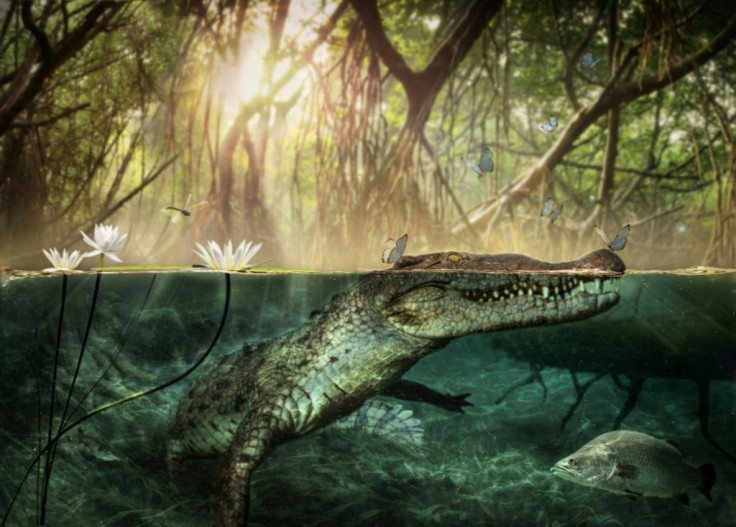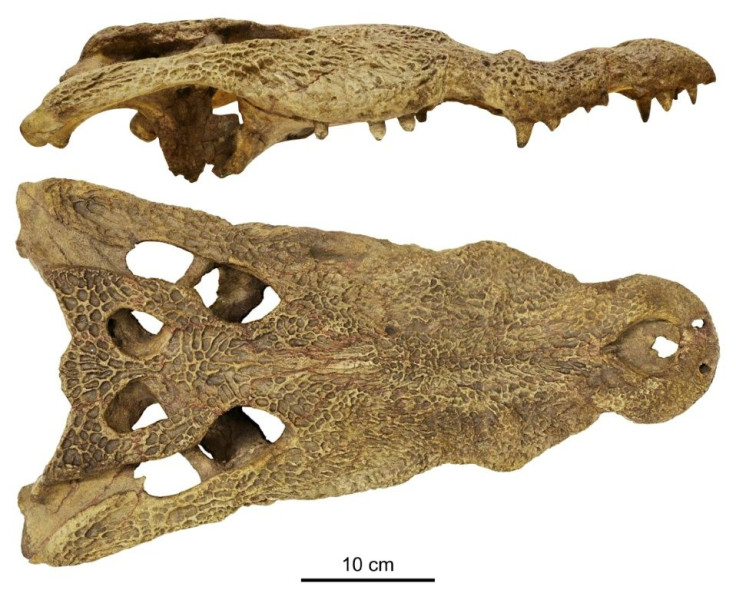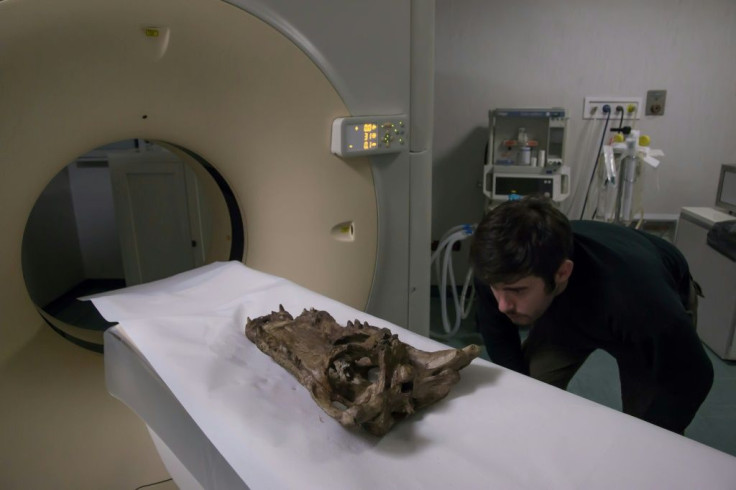Origin Story: America's Crocodiles Came Out Of Africa

The several species of crocodiles plying rivers and brackish byways in the Americas -- from Florida to Peru -- all came from Africa, according to a study published Thursday.
They may have descended, researchers speculate, from a single pregnant specimen that bobbed along Atlantic Ocean currents to the New World at least five million years ago, probably longer.
Based on the high-tech analysis of a skull fragment unearthed from the Libyan desert in 1939, the findings are bolstered by genetic evidence pointing in the same direction, they reported in the journal Scientific Reports.
"This is a really exciting discovery," lead authors Massimo Delfino from the University of Turin and Dawid Iurino, a palaeontologist at Sapienza University in Rome, told AFP by email.
"It supports the results of molecular biologists that proposed the origin of American crocodiles had to be found in Africa."
The out-of-Africa narrative is based on the re-examination of the skull and upper jaw of a seven-million-year-old fossil that had been tucked away for decades in a university museum drawer.

It belonged to an extinct species called Crocodylus checchiai.
Using CT-scans and 3D-modelling, the scientists identified a tell-tale protrusion in the middle of the animal's snout not found in any other African crocodile, living or extinct, but present in all four species currently found in the Americas.
In the world of paleontology, this is pretty close to a smoking gun.

"Our results are solid," the researchers said when asked if the evidence was conclusive.
"The main problem for palaeobiologists is the rarity and fragmentary nature of fossil remains."
Four other fossils dug up in Libya at the same time -- including a complete skull and jaw -- were either destroyed during World War II or lost.

C. checchiai rewrites the story of how crocodiles spread across the planet in at least two ways.
It lays to rest the already fading hypothesis that the giant, flesh-ripping reptiles -- which first emerged from Asia -- arrived in the Americas before moving on to Africa, and not the other way around.
The long-neglected fossil also supplants another contender from Africa -- Crocodylus niloticus, aka the Nile crocodile -- as the closest forebear of the American species.
"According to our results, C. checchiai nests between the Nile crocodile and the American species," the authors told AFP.
"It represents the missing link between the African and American lineages."
"We can therefore assume one or more specimens -- perhaps a pregnant female -- dispersed from Africa to America about seven million years ago, at the very least five million."
That such a voyage is possible has been demonstrated by a present-day cousin, Australia's saltwater crocodile, which satellite tracking has shown can travel 500 kilometres (310 miles) in about a month while passively transported by ocean currents.
More closely related to birds than dinosaurs, egg-laying crocodiles have been around for about 55 million years.
There are 16 species spread across the tropics of Africa, Asia, Australia and, of course, the Americas.
They vary in size from less than two metres (six feet) for the dwarf crocodile, to more than seven metres and 1,000 kilos (2,200 pounds) for the saltwater species.
The carnivores are able to replace each of their 80 teeth up to 50 times during their lifespan, which can top 60 years.
© Copyright AFP {{Year}}. All rights reserved.





















